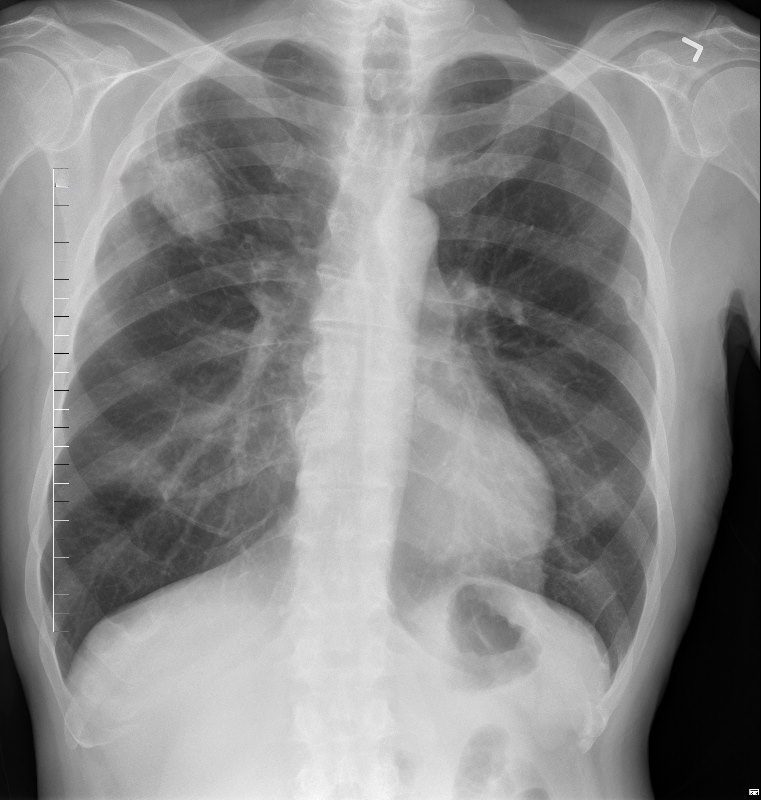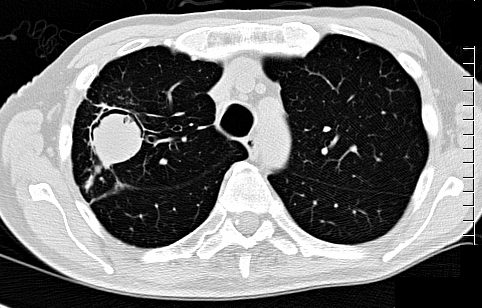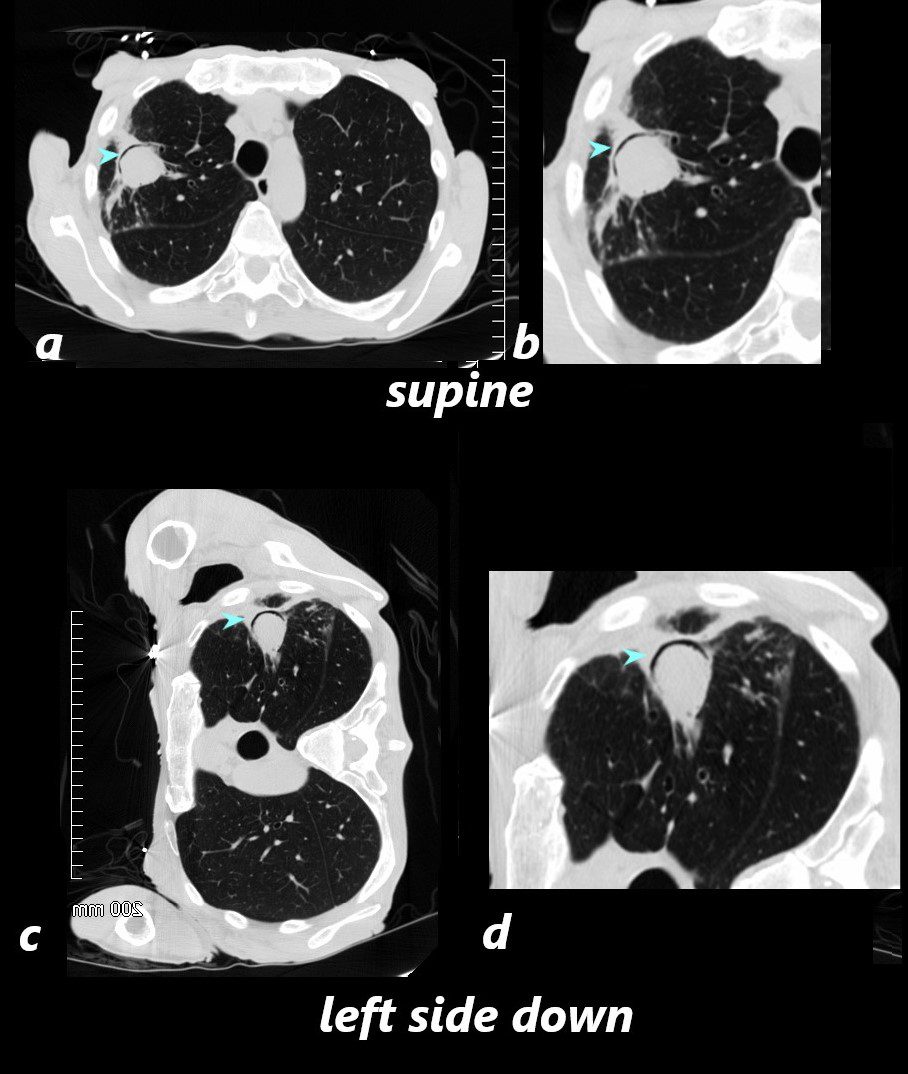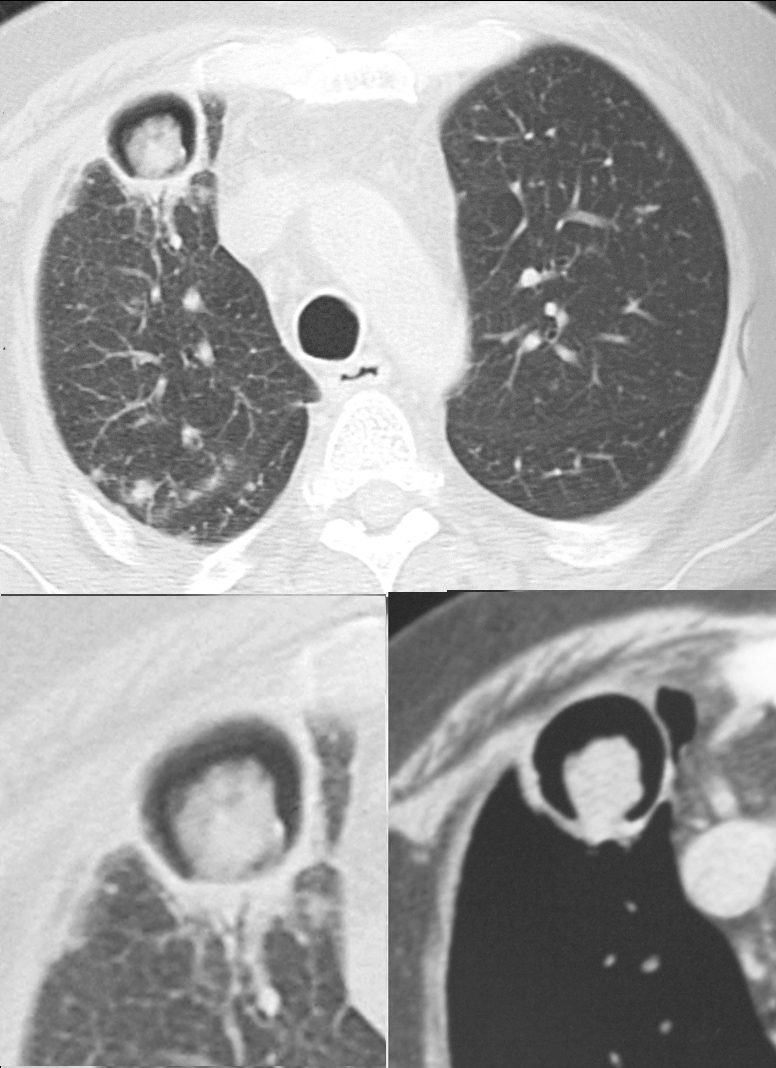- Buzz words
- Fungus ball in the lungs
- Does not spread
- Can be asymptomatic
Aspergilloma of the lungs, aka mycetoma
-
- caused Aspergillus species,

66 year malnourished immunodeficient male with right upper lobe aspergilloma in the lung
There is a suggestion of a linear air shadow on the right side of the mass. CT confirmed an air-crescent sign
Ashley Davidoff TheCommonVein.net 113533b

66 year malnourished immunodeficient male with right upper lobe aspergilloma in the lung
CT scan in the axial plain shows an air-crescent sign with right Upper lobe mass consistent with aspergilloma
Ashley Davidoff TheCommonVein.net 113530b01

CT scan in the axial projection with the patient in the supine position shows a soft tissue mass in the right upper lung field with an anterior crescent shaped rim of air (blue arrowheads) anterior to the aspergillus fungus ball (a, magnified in b)
Since the fungus ball is movable, when the patient is placed in the the left decubitus position c and d), the fungus ball “sinks” to the dependent position and the air moves to the most superior position (blue arrowheads)
Ashley Davidoff TheCommonVein.net 78612a L

Ashley Davidoff TheCommonVein.net
- predisposing factors
- preexisting lung damage or
- cavities,
- eg tuberculosis, bronchiectasis, or lung abscesses.
- Symptoms include
- persistent cough,
- chest pain,
- hemoptysis
- dyspnea
- unintentional weight loss.
- Diagnosis involves medical history, physical examination, imaging (X-rays, CT scans), and sometimes lab tests.
- Treatment options include observation for mild cases, antifungal medications (itraconazole, voriconazole), surgical removal of the fungal ball, or embolization in some cases.
- Surgical removal may be considered for severe cases, but it can be challenging due to potential complications.
- Management decisions should be made in consultation with a medical professional, such as a pulmonologist or infectious disease specialist.
TCV Links
Fleischner Society
air crescent
Radiographs and CT scans.—An air crescent is a collection of air in a crescentic shape that separates the wall of a cavity from an inner mass (,Fig 3). The air crescent sign is often considered characteristic of either Aspergillus colonization of preexisting cavities or retraction of infarcted lung in angioinvasive aspergillosis (,9,,10). However, the air crescent sign has also been reported in other conditions, including tuberculosis, Wegener granulomatosis, intracavitary hemorrhage, and lung cancer. (See also mycetoma.)
